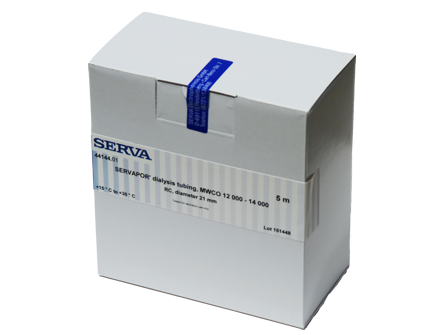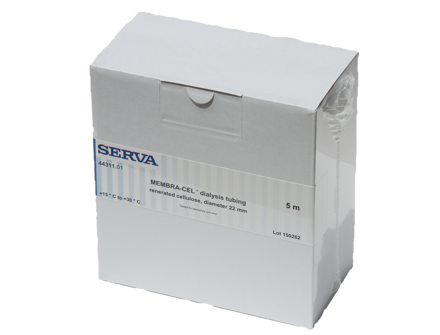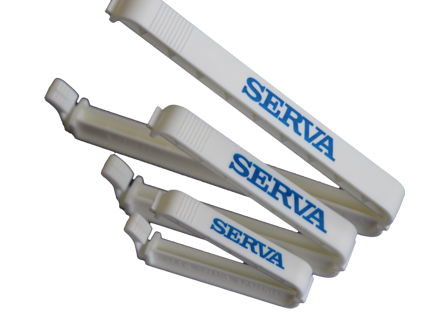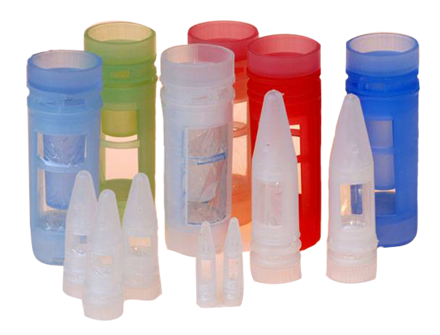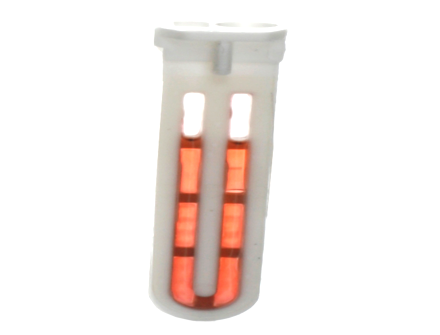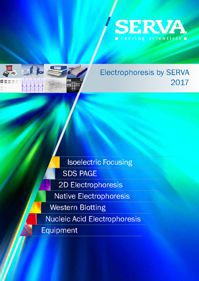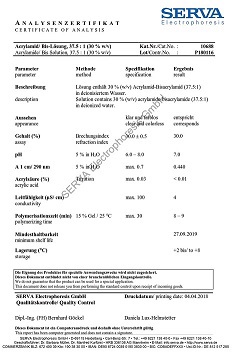Dialysis
Dialysis is a process where substances in solution are separated by their differences in molecular weight. The dialysis tubings are semipermeable, made of regenerated cellulose or cellulose ester having a gel-like structure. The driving force is the concentration difference between 2 solutions on opposite sides of the membrane. Since the porous membrane selectively allows smaller solutes to pass while retaining larger species, dialysis can effectively be used as a separation process based on size rejection.
Since the dialysis membrane consists of a spongy matrix of crosslinked polymers, the pore rating referred to as Molecular Weight Cut Off (MWCO), is an indirect measure of the retention performance. The membrane MWCO is determined as the solute size that is retained by at least 90 %. However, since a solute’s permeability is also dependent upon molecular shape, degree of hydration, ionic charge and polarity, it is recommended to select a MWCO that is half the size of the MW of the species to be retained and/or twice the size of the MW of the species intended to pass through.
For many years, dialysis has been successfully used as a routine method for
desalting and concentration of complex biomolecules in solution. In addition,
macromolecules, differing substantially in molecular weight can be separated.
Applications
- Desalting of protein solutions, e.g. for further purification by ion exchange chromatography
- Concentration of protein solutions by embedding the filled tubing in dry PEG 20000 (cat. no. 33138) e.g. before further separation by gel permeation chromatography
- Separation of high molecular weight proteins from low molecular weight peptides and other substances
- Buffer exchange with solutions of proteins or other macromolecules
- Desalting of metallo colloids

